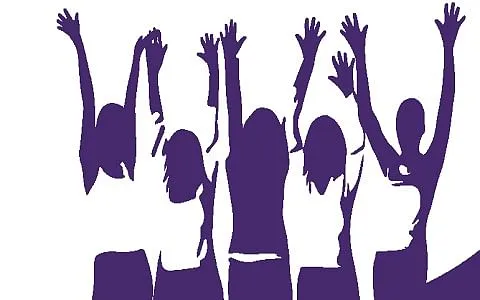Every year 8th March is celebrated asWomen’s Day world over. But as long as we continue to look at 365 days of theyear as men’s days and one single day as women’s, we will fail as a society.Men and women are born equal: inequality based on gender is a social and cultural construct.
Women make up 50% of world’s population,comprise 33.3% of labour force, perform nearly 66.6% of all working hours,receive just 10% of world’s income and own less than 1%of world’s property”. This significant statisticalstatement of UNO is enough to illustrate the status of women in any societyfrom economic point of view.
Men often argue that our society has achieved gender equality. Women have all the same legal rights as men, workplace discrimination based on gender is illegal, more and more women are educated and financially independent and women have far more opportunities than their mothers and grandmothers could dream of. But gender inequality still remains a harsh reality.
There is enough evidence of widespread prejudice against women and girls from years of sociological and psychological research. Studies reveal that some of the strongest forces behind persistent gender gaps are harmful social norms and stereotypes regarding males and females.
It is these stereotypes that shape the perceived value of girls in relation to boys. These stereotypes normalize the idea that men are superior to women and should have control over women’s choices, determine what is considered to be gender ‘appropriate’ behaviour, burden women with disproportionate shares of unpaid household work and family care and can, at times, even sanction violence against women.
Boys and girls are inherently different butit’s through socialization that a male child develops a particular mindset and accordingly hisattitude, behaviour, conduct and perception develops.
From a very young age boys are taught to beaggressive and dominating while girls learn to be soft, caring, loving,compassionate and submissive. In order to prove their masculinity, men areconditioned to ‘dominate’ by adopting a hyper-masculine facade, even if theyare soft by nature.
In India as in many other countries gender inequality and abuse against women is socially accepted. Women’s subordinate status is reflected in almost every sphere of our society.
Women’s work is undervalued and unrecognized, though they work longer hours than men and carry major share of responsibilities (which remain invisible). With the changing socio-economic reality, more and more men want to marry ‘working’ women but are unprepared when it comes to sharing the responsibilities of household. Women are expected to be superhuman: they should be perfect wives, perfect mothers, perfect homemakers and should have a perfect career too. This overburdening deteriorates their physical and emotional well-being and can lead to mental health issues.
The sex ratio of our state is 889:1000. The adverse ratio can be explained by the fact that ‘SonPreference’ is still a reality. If awoman does not give birth to a son, she is made to believe that she has missedthe opportunity to accomplish the purpose of her life. Although there’s a legalstatute in place to deal with sex-selective abortions but society arrogantlyremains unhindered in its son preferential attitude. The obsession goes beyondlaws and policies.
Laws, policies and slogans like ‘Beti Bachao Beti Padhao’ cannot make a difference unless they are alien to the collective consciousness of society. Reforms cannot be superimposed. Disparity exists in our minds, in our biases and prejudices and they need to be fixed. Women are inferior is embedded in our consciousness by patriarchy.
Promoting gender parity in patriarchal social order is therefore impossible without the consent and involvement of male population. Without the involvement of men, no amount of reservations and welfare programs can enhance the status of women.
Shaping more supportive social norms and challenging outdated stereotyping will be a powerful driver of progress towards gender equality and women’s empowerment.
To create a world free of biases, we need to begin at home. Parents are the first role models of children. If they grow seeing gender inequality being exercised or tolerated in this relationship, they are more likely to be exposed to negative gender role stereotyping.
Therefore, inequality of every kind should be eliminated and anything that undermines the possibility of a healthy, stable and happy family should be eliminated too. Parents should help in building a child’s resilience to rigid gender stereotypes.
This would, in turn, prevent them to commit any kind of injustice against women as they grow up. We have to teach ours boys the rules of equality and respect so that gender equality becomes a natural way of life.
We have to teach our daughters that they can reach as high as humanly possible. Since children learn what they see, it is important for parents to share household chores as well as outside chores, participate equally in financial matters, exhibit joint decision-making and treat each other with love and respect.
More egalitarian the relationship, happier we are. Both boys and girls should be taught the basic life skills like cooking, cleaning, laundry, handling basic household tools etc.
Relationships based on inequality and exploitation must be transformed into relationships of equality, love, respect and mutuality. We should envisage a world where every day is a men’s and women’s day, where we learn to celebrate humanity irrespective of gender, where every boy and every girl can hold their heads high and create the kind of life they wish to lead unconstrained by harmful norms and constraints.
(Rehana Bhat is Sr. Assistant Professor Department of English Islamia College Of Science and Commerce, Srinagar)bhatrehana@gmail.com






